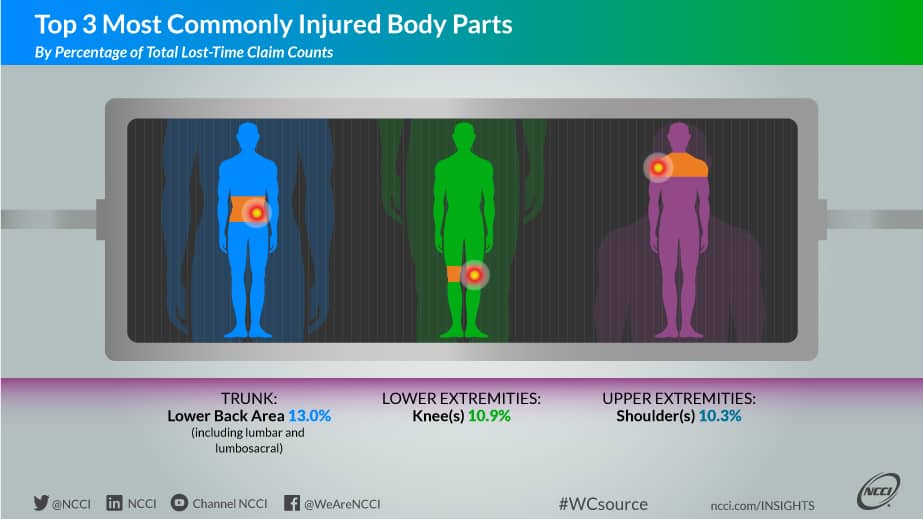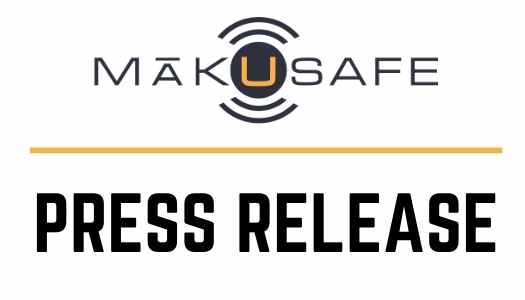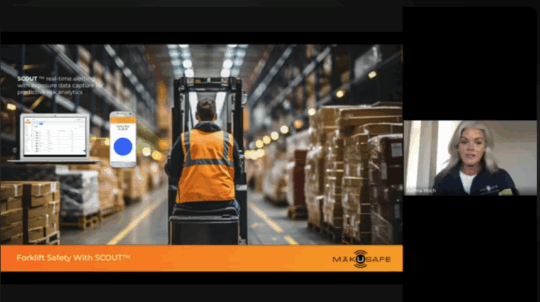NCCI Article – Technology at Work – Wearables in Workers Compensation
June 24, 2019
In today’s modern world, more individuals are using wearable devices to help them stay connected, keep better track of their daily activities, and achieve their health, fitness, and overall wellness goals. But with improving technology and expanding opportunities, wearable devices are now taking on much larger roles.
A wearable device—typically thought of in terms of fitness trackers and smart watches—is any advanced electronic device with smart sensors, worn or carried on the body, that seamlessly collects and transmits data through some type of network connection, such as cellular, Wi-Fi, Bluetooth, or GPS.
More and more, employers are looking at how wearable technology can be implemented in the workplace, with improving employee safety as a primary goal. Devices can allow companies to monitor and track activities, analyze motions, alert for hazards, and augment physical capabilities, among other things.
Workers compensation has experienced a long-term decline in overall claim frequency, with a 19% decrease from Accident Year 2011 to Accident Year 2016. Among other causes, NCCI research points to automation, robotics, and continued advances in safety as contributing factors to the decrease. However, during this same time period, total claim severity increased 13%.
Could these frequency and severity workplace injury trends be impacted by the use of wearable devices? What impact could the widespread use of wearable devices have on the workers compensation system? NCCI interviewed workers compensation stakeholders for their views on this evolving topic.
How prevalent are wearables in workers compensation?
When it comes to workers compensation, wearables are in their infancy. While wearables are being tested today by insurance companies, as well as other employers and their workers, the technology and its potential is primarily in the proof-of-concept phase.
Companies are expressing interest in exploring uses for wearables as advances are made, yet only a handful of companies have piloted the technology to date, according to the stakeholders we interviewed. Similarly, while some larger employers are piloting wearables, the actual use among employers overall appears limited so far.
Primary stakeholders in the implementation process for wearables include insurance companies, agents, policyholders/employers (including risk managers and human resources personnel), employees, and wearables vendors that provide the technology and can partner with insurance companies and employers on proof-of-concept/pilot projects.
Can wearables be used to help prevent or reduce workplace injuries?
Wearable technology, as it relates to workers compensation, ranges from measuring an employee’s physical activity, posture, or location to measuring multiple workplace conditions such as movement, light, humidity, temperature, and other environmental conditions. Some wearables can pair the data collected with third-party data—such as data about weather conditions—to provide a more complete picture of the working environment and associated risks.
According to NCCI data,1 the most common workplace lost-time claims are strains or injuries from lifting, pushing, or pulling, as well as falls, slips, and trips. The most commonly injured body parts are the lower back, knee, shoulder, and fingers, while the most severe injuries are to the head, brain, neck, and spine.
So, can wearables do anything to prevent or reduce the occurrence, risk, or severity of these most common lost-time workers compensation claims?
The stakeholders we interviewed said that wearable devices that measure the amount of weight lifted and the number of times an employee moves an item—movements often associated with the most common lost-time claims—are still in the proof-of-concept stage. But the technology is moving toward providing more real-time data, allowing for immediate feedback to workers and employers about a potentially hazardous condition or situation to help prevent injuries. For example, employees would feel a vibration if they are lifting in an unsafe manner and could correct the lift before an injury occurs.
The stakeholders noted that analyzing the data collected from wearable devices may also help prevent future injuries. Taking the lifting example, a dashboard analysis could show the number of lifts (whether safe or unsafe) an employee has completed, so that the employee can correct the unsafe movements going forward. Using data collected from wearables, employers may be able to predict hazardous situations and enhance accident prevention measures.
Over time, and with improving technologies, the reliability of the data is expected to increase so that ultimately, as one of our stakeholders noted, “wearables will be able to combine data and machine learning and apply predictive analytics to identify situations where injuries are more likely, so that employers and workers can take preemptive corrective action to reduce the risk of injury.”

How can wearables be used post-injury, including return-to-work scenarios?
In addition to preventing injuries, wearable devices could assist injured workers returning to work and help keep them there once they return. In a compelling example of how wearables can be used in workers compensation return-to-work scenarios, a first responder who suffered a spinal cord injury in the line of duty was fitted with an exoskeleton. The individual was able to return to work as a police officer six months after he was injured.
Other examples include range-of-motion devices that can alert workers on limited duty to reduce their activity, and postural devices to assist with ergonomic limitations. These devices allow for a safer and better recovery for workers.
Are there certain industries or occupations where wearables can affect severity?
According to NCCI data, the contracting industry group (which includes roofing, plumbing, and excavation) had the largest increase in claim severity from AY 2011 to AY 2016. Could the contracting industry group look to wearables as a means of addressing their workplace injuries?
Our interviewed stakeholders noted that wearables currently may be more suitable for indoor industrial environments, which generally have the infrastructure needed to support the use of wearable technology. But according to at least one stakeholder we interviewed, companies are incorporating wearables in numerous different industries, including manufacturing and construction. The transportation industry has also expressed interest in experimenting with wearable technology. Other industry groups, like those found in the high-severity contracting group, may soon follow, as they observe what wearable technology can offer.
What are the biggest obstacles to the widespread use of wearables?
The stakeholders we interviewed mentioned several potential obstacles to the widespread use of wearables, including:
- Protecting the privacy of the information collected
- Affording the cost of the products
- Appropriately analyzing and using the data collected
- Understanding the proper use of wearables
While privacy concerns still pose a potential obstacle to the widespread use of wearables for workers, the stakeholders we interviewed indicated that many of the current wearable devices used in the workplace primarily collect environmental information about an employee’s surroundings rather than specific medical or health information. This is a developing area that stakeholders are monitoring.
In terms of affordability, as with any new product, wearable costs are expected to decrease over time as new companies and products enter the marketplace. However, employers may have concerns about investing in wearable devices if they have short lifespans as next-generation technology and/or newer versions of the wearable devices become readily available.
Other potential obstacles to widespread use include the ability to fully understand the wearable product and the quality of the data it collects, and to analyze that data and convert the information into processes that can be implemented in the workplace. In addition, there may be difficulties compiling trend data over time for injuries and claims that have a short cycle.
As wearable use becomes more widespread, it may result in unintended risks such as overdependence on the wearable or improper use of the device. Coaching, education, and training programs can help workers learn to appropriately use wearables and enhance the potential safety benefits.
However, as one stakeholder noted, “wearables are tools that can aid in keeping people safe, but they are just that—tools. They do not eliminate safety best practices or replace the need for a strong safety culture.”
Is wearable technology a game changer for workers compensation?
The stakeholders we spoke with believe that wearable technology has the potential to be a game-changer for workers compensation. One stakeholder indicated a 30% to 50% reduction in back-related injuries during the proof-of-concept stage and the potential for more reductions in injuries and claim costs as wearable technology improves and becomes more widely used.
As wearable technology advances, the interviewed stakeholders agree that wearables are well positioned to become an integral part of the future workplace and the workers compensation system. Notably, with more widespread use, wearables could provide data and information that could lead to safer workplaces and may help reduce recovery times, facilitate return-to-work, and reduce the overall costs of workers compensation claims.
One of the most important goals in workers compensation is to prevent an injury before it occurs. If wearables can identify and mitigate risks in real time—before a worker is injured—it could transform the world of loss control and, most importantly, transform the lives of workers. As one of our stakeholders noted, “By preventing injuries, everybody wins: the employee, employer, agent, and the insurance company.”
NCCI will continue to monitor developments regarding the use of wearables in workers compensation and will provide periodic updates on this emerging issue.
For more insights on wearables and other game changers that will be impactful to workers compensation, check out our Annual Issues Symposium 2019 Game Changers presentation here.
Special thanks to organizations that generously shared their thoughts: Amerisure, EMC Insurance Companies, MākuSafe® Corp., Travelers, and One Call.
This article is provided solely as a reference tool to be used for informational purposes only. The information in this article shall not be construed or interpreted as providing legal or any other advice. Use of this article for any purpose other than as set forth herein is strictly prohibited.
1 The Unit Statistical claim data included in this article represents states reported in accordance with NCCI’s Statistical Plan for Workers Compensation and Employers Liability Insurance (AK, AL, AR, AZ, CO, CT, DC, FL, GA, HI, IA, ID,IL, IN, KS, KY, LA, MD, ME, MO, MS, MT, NE, NH, NM, NV, OK, OR, RI, SC, SD, TN, TX, UT, VA, VT, and WV), and North Carolina, which is reported in accordance with the North Carolina Rate Bureau Workers Compensation Statistical Plan Manual. The data includes lost‐time claims for Policy Year 2016 evaluated at first report, which is 18 months after the inception date of the policy.





